CONECTAR
Entraremos em contato com você dentro de 24 horas.
Para consultas urgentes, entre em contato conosco pelo número do whatsapp: +86-18939970172

O Aluminium Paste & Powder (APP) é um agente aerador essencial para a produção de concreto aerado leve. Ele reage com substâncias alcalinas para liberar hidrogênio, criando uma estrutura porosa que melhora o isolamento térmico, o isolamento acústico e a flexibilidade da construção. Ideal para reduzir o peso da construção e melhorar a resistência a terremotos.
A pasta e o pó de alumínio (APP) são um agente de aeração crucial na produção de blocos de CAA. Ele reage com substâncias alcalinas para liberar gás hidrogênio, formando uma estrutura leve e porosa. Veja a seguir os principais aspectos:
Em um ambiente alcalino (por exemplo, Ca(OH)₂), a pasta e o pó de alumínio reagem com a água para produzir gás hidrogênio:
2Al+3Ca(OH)2+6H2O→3CaO⋅Al2O3⋅6H2O+3H2↑
Essa reação cria poros uniformemente distribuídos na pasta, reduzindo a densidade do produto final para 500-700 kg/m³ - apenas um quinto do concreto convencional.
O tamanho e a distribuição dos poros determinam diretamente as propriedades de isolamento e isolamento acústico do CAA. Para obter uma estrutura de poros idealPara que as partículas de alumínio possam ser usadas, elas devem ter uma finura adequada (≤3% de resíduo em uma peneira de 0,075 mm) e um alto teor de alumínio ativo (≥85%).



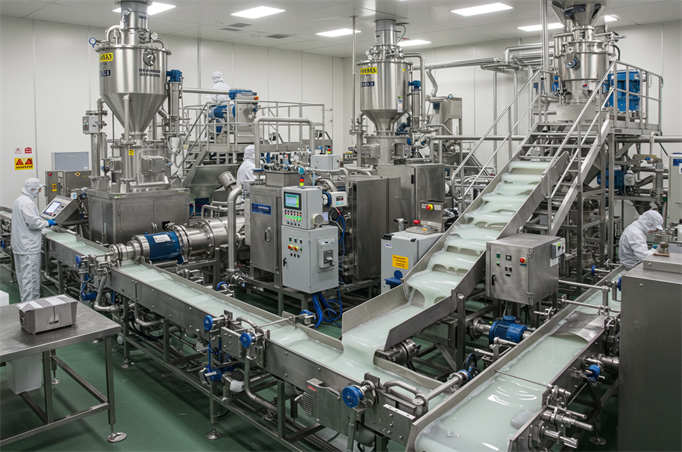
O processo de produção de pasta de alumínio aerada (slurry)/pó é fundamental para determinar a qualidade e o desempenho do produto final. Este capítulo detalhará o fluxo de produção, as principais tecnologias e os pontos de controle de cada etapa do processo de fabricação da pasta de alumínio aerada (slurry)/pó para ajudar os leitores a entender melhor a fabricação desse material essencial.
O fluxo de produção de pasta de alumínio aerada (slurry)/pó normalmente inclui as seguintes etapas principais:
Antes do início da produção, a seleção e a preparação das matérias-primas são cruciais. A principal As matérias-primas incluem pó de alumínio, aditivos (como DEG, dispersantes, etc.) e outros ingredientes. A seleção do pó de alumínio geralmente se baseia em seu tamanho de partícula, atividade e pureza. O pó de alumínio altamente ativo pode gerar mais gás hidrogênio ao reagir com a água, obtendo assim melhores efeitos de geração de gás. A seleção de aditivos precisa considerar sua função na pasta de alumínio aerada, como melhorar a fluidez e aumentar a reatividade.
O pó de alumínio preparado e os aditivos são misturados em um certo proporção. Essa etapa geralmente usa equipamentos de mistura de alta eficiência para garantir a distribuição uniforme dos componentes e evitar a aglomeração. O tempo e a velocidade da mistura devem ser rigorosamente controlados durante o processo de mistura para garantir uma combinação suficiente de pó de alumínio e aditivos, criando uma boa base para as reações subsequentes.
Os materiais misturados precisam ser moídos para atingir o tamanho de partícula especificado. Essa etapa é fundamental para melhorar a atividade do pó de alumínio. O uso de moinhos de bolas ou outros tipos de equipamentos de moagem pode reduzir efetivamente o tamanho da partícula e aumentar a área de superfície do pó de alumínio, melhorando assim sua reatividade com a água. Após a moagem, os materiais também devem ser classificados para garantir a consistência do tamanho das partículas e da distribuição do produto.
Nessa etapa, o pó de alumínio moído é misturado com água e outros aditivos necessários para formar a pasta de alumínio. As condições de reação nesse momento (como temperatura e velocidade de agitação) precisam ser controladas para garantir que a reação entre o pó de alumínio e a água seja suficiente para gerar uma estrutura de bolhas estável. É possível obter melhor efeito de geração de gás e fluidez por meio de proporção e agitação razoáveis.
A pasta de alumínio aerada preparada (slurry) deve prestar atenção às condições ambientais durante o armazenamento e o transporte, evitando altas temperaturas e umidade para evitar reações prematuras e falhas. Suas propriedades físicas e químicas devem ser verificadas regularmente durante o armazenamento para garantir a estabilidade da qualidade do produto. Por fim, a pasta de alumínio deve ser embalada de acordo com os padrões para garantir que não ocorra nenhum vazamento ou deterioração durante o transporte.
No processo de produção de pasta de alumínio aerada (slurry)/pó, várias tecnologias importantes têm um impacto profundo no desempenho e na qualidade do produto final:
A moagem de bolas é um importante tecnologia para moagem de pó de alumínio. O processo de moagem física pode reduzir efetivamente o tamanho das partículas do pó de alumínio e aumentar sua área de superfície específica. Tamanhos menores de partículas ajudam a aumentar a reatividade do pó de alumínio, permitindo que ele gere gás hidrogênio mais rapidamente ao reagir com a água, formando assim uma estrutura de bolhas uniforme e estável.
Jogos de tecnologia de classificação um importante O papel da classificação é garantir a consistência da distribuição do tamanho das partículas do pó de alumínio. Por meio da classificação, os pós de alumínio de diferentes tamanhos de partículas podem ser separados, melhorando a atividade e a adaptabilidade do material. Uma distribuição adequada do tamanho das partículas pode otimizar a formação de bolhas e melhorar a resistência do concreto aerado e o desempenho do isolamento térmico.
No processo de preparação da pasta de alumínio, o controle das condições de reação (como temperatura e tempo) é fundamental. Condições razoáveis de reação podem garantir que a reação entre o pó de alumínio e a água seja suficiente para gerar um número adequado de bolhas distribuídas uniformemente. A aplicação da tecnologia de controle de reação ajuda a melhorar a estabilidade e a consistência do produto.
O desempenho do produto pode ser aprimorado por meio da otimização contínua da formulação da pasta de alumínio (slurry). Por exemplo, a adição de quantidades adequadas de determinados aditivos pode aumentar a taxa de reação do pó de alumínio e melhorar a fluidez e a estabilidade da pasta de alumínio. Além disso, para diferentes necessidades de aplicação, as empresas podem desenvolver vários tipos de pasta de alumínio para atender às diversas necessidades do mercado.
Na produção, o controle das condições ambientais (como temperatura e umidade) também é fundamental para garantir a qualidade do produto. Especialmente nos estágios de armazenamento e transporte, é necessário fornecer condições ambientais adequadas para evitar que a pasta de alumínio falhe ou se deteriore devido a mudanças ambientais.
O controle de qualidade é um importante O sistema de controle de qualidade é um elo em todo o processo de produção para garantir o desempenho estável da pasta de alumínio aerada (slurry)/pó. As empresas geralmente estabelecem um sistema completo de gerenciamento de qualidade, incluindo:
Antes do início da produção, todas as matérias-primas devem passar por uma rigorosa inspeção de qualidade para garantir que atendam aos padrões de produção. A atividade, a pureza e a distribuição do tamanho das partículas do pó de alumínio precisam ser testadas para determinar se ele atende aos requisitos de produção.
Durante o processo de produção, os parâmetros de cada estágio (como temperatura, umidade, tempo de mistura, etc.) são monitorados em tempo real para garantir que o processo de produção esteja sempre no melhor estado. Além disso, o equipamento de teste on-line pode detectar e ajustar problemas a tempo de evitar a geração de produtos não qualificados.
Depois que o produto é produzido, é necessário realizar testes abrangentes de desempenho do produto acabado, incluindo indicadores como fluidez, geração de gás e resistência à compressão, para garantir que ele atenda aos padrões relevantes e às necessidades do cliente. Somente os produtos que passaram por testes rigorosos podem ser colocados no mercado para venda.
| Característica | Pasta de alumínio (à base de água) | Pó de alumínio seco |
|---|---|---|
| Processo de produção | Moagem úmida, sem necessidade de desengorduramento | Retificação a seco, requer desengorduramento |
| Segurança | Sem risco de explosão de poeira | Inflamável e explosivo, requer proteção de nitrogênio |
| Facilidade de uso | Adicionado diretamente à pasta, com boa dispersão | Requer tratamento pré-desengordurante |
| Impacto ambiental | Baixa poluição, fácil tratamento de águas residuais | Alto consumo de energia, mais poluição |
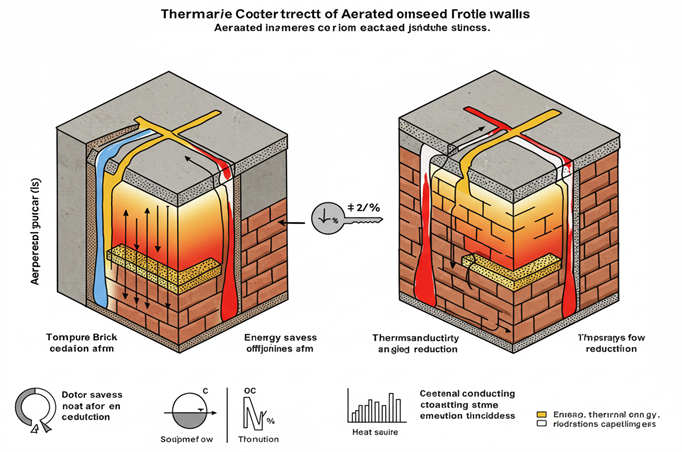
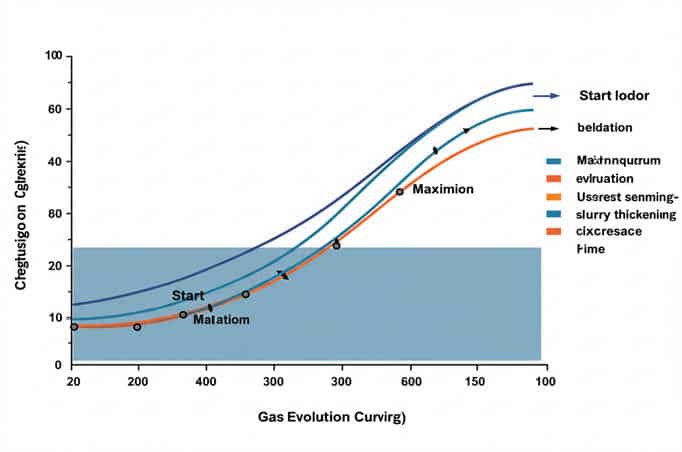




Abaixo estão os principais métodos de teste e requisitos técnicos baseados nos padrões do setor e em aplicações práticas:

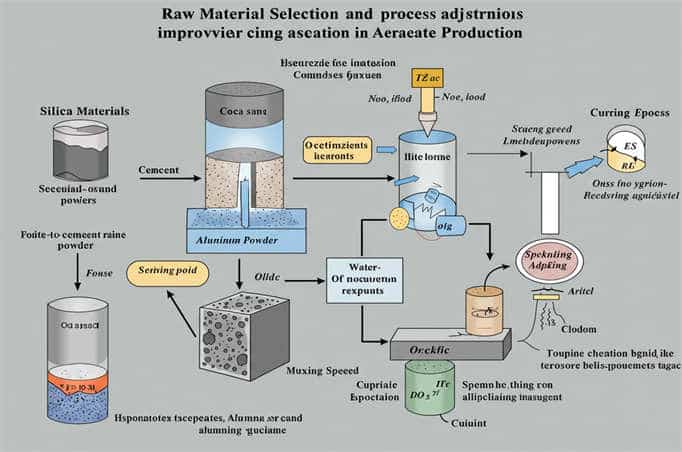
A pasta e o pó de alumínio devem ser aerados em uma taxa que se alinhe ao espessamento da pasta:
Mantenha a temperatura da pasta entre 40 e 60°C. O calor excessivo acelera a aeração, com risco de expansão descontrolada, enquanto as baixas temperaturas retardam a aeração, levando a uma distribuição desigual dos poros.
O Fiver Star New Materials garante a qualidade ideal do concreto, melhorando a eficiência térmica, a resistência mecânica e a adaptabilidade da construção por meio do ajuste fino dos parâmetros de aeração.
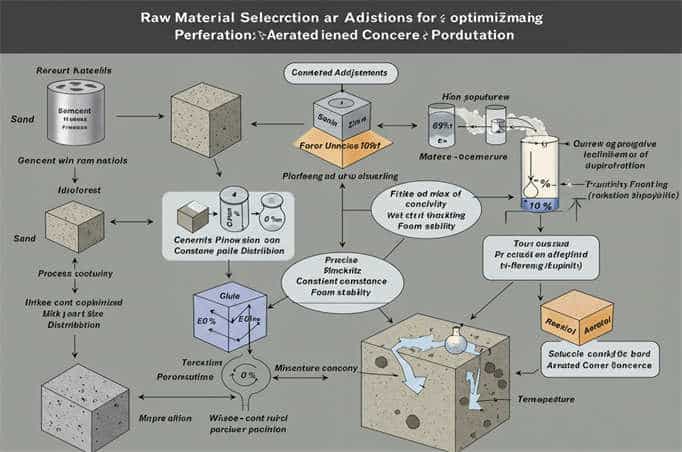

| Nome do produto | Conteúdo sólido (%) | Alumina ativa (%) | Densidade a granel | Tamanho médio da partícula (D₅₀) | Adequado para AAC |
|---|---|---|---|---|---|
| DEG-60 | 70% | ≥96 | 0.15 | 58-62 | <600 |
| DEG-40 | 70% | ≥94 | 0.15 | 36-42 | <500 |
| DEG-35 | 70% | ≥94 | 0.15 | 33-35 | <400 |
| DEG-25 | 70% | ≥94 | 0.15 | 25-27 | <400 |
| DEG-18 | 70% | ≥92 | 0.11 | 17-19 | <350 |
Sugerimos que você se comunique conosco antes de comprar, pois certamente consideraremos todos os aspectos e ofereceremos um plano de preços justo e razoável. Ao nos escolher, você obterá o melhor produto e o melhor valor pelo seu dinheiro.
Ao escolher o tamanho certo do produto, você obtém a melhor relação custo-benefício. Nossa pasta Metal Flash Aluminum Silver Paste está disponível em uma ampla variedade de tamanhos de partículas e purezas, com preços que variam de acordo com a especificação. Ao comunicar detalhadamente suas necessidades e escolher o tamanho certo, você pode obter o melhor custo-benefício.
Quanto maior a quantidade comprada, menor será o preço unitário. Os pedidos em grandes quantidades nos permitem dividir melhor nossos custos operacionais e de produção, por isso temos o prazer de oferecer preços com desconto para compras em grandes quantidades.
O prazo e o método de pagamento que você escolher também afetarão o preço. Por exemplo, o pagamento integral antecipado pode resultar em um preço mais favorável, pois reduz nosso custo de capital. Discuta a opção de pagamento mais adequada com nossa equipe de vendas.
O transporte e a logística também são fatores que afetam o custo total de propriedade. Diferentes modos de transporte e destinos incorrerão em diferentes custos de remessa. Taxas, seguros e outros custos também precisam ser levados em conta. Ao calcular esses fatores antes da compra, você pode estimar com mais precisão o custo total.
Na Five Star Materials, nossa pasta e pó de alumínio para AAC são produzidos em um processo delicado e rigoroso. Veja abaixo o nosso processo básico de produção:
Compramos matérias-primas de alta pureza de fornecedores confiáveis para garantir a qualidade de nossos produtos desde a origem.
A matéria-prima é triturada para converter os blocos de alumínio em partículas minúsculas para processamento posterior.
O pó de alumínio triturado é misturado com nossos solventes e aditivos especialmente formulados e, em seguida, misturado em um processo de mistura de alta velocidade. Essa etapa é muito importante, pois determina a estabilidade da pasta de alumínio e o formato das partículas.
Após a moagem, a pasta de alumínio passa por um sistema de filtragem para remover possíveis impurezas. Em seguida, nossa equipe de controle de qualidade realiza uma série de testes no produto, como tamanho de partícula, brilho, sensação metálica etc., para confirmar que o produto atende aos nossos altos padrões de qualidade.
Os produtos que passaram por testes rigorosos são cuidadosamente embalados e armazenados em nossos depósitos, prontos para serem enviados aos nossos clientes.
Observe que esse é um processo básico de produção e que o processo exato pode variar de acordo com os requisitos específicos do produto. Na Five Star Materials, levamos o controle de qualidade muito a sério e garantimos que nossos produtos atendam aos nossos rígidos padrões de qualidade em todas as etapas do processo de produção.


Na Five Star Material, entendemos que cada projeto é único, e nosso objetivo é fornecer as melhores soluções personalizadas para cada cliente.
Entraremos em contato com você dentro de 24 horas.
Para consultas urgentes, entre em contato conosco pelo número do whatsapp: +86-18939970172

